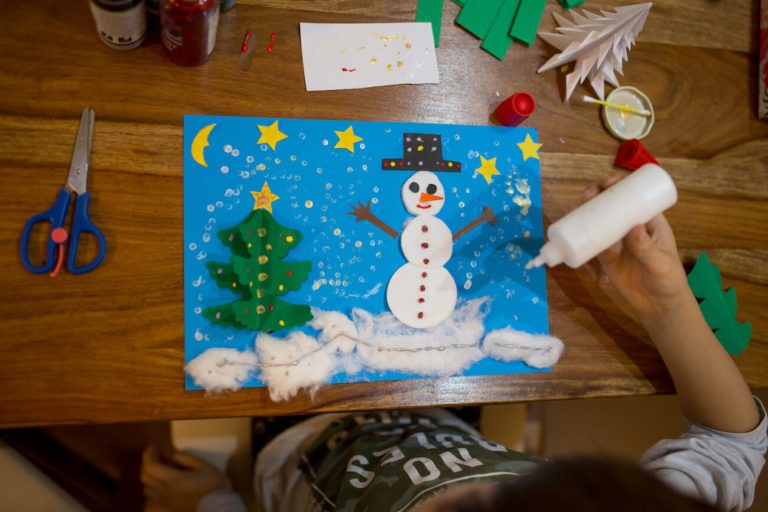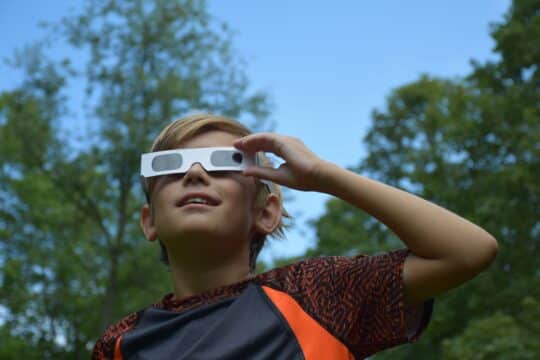When the weather outside is frightful, and well, you know the rest. When it is chilly outside, those outdoor lessons and outdoor lunches just do not happen anymore. It is the time to get creative and think outside the box on how to keep students moving and challenged. Below are various activities that you can try with your class across many different disciplines with many being cross-curricular.
Paper Snowflakes & Macaroni Snowflake Ornaments: Art
This craft has certainly stood the test of time. One of the simplest winter activities is to have the students make paper snowflakes. You can use construction paper or even computer paper, whatever you decide. If you are using paper, make sure it is in a square shape to start (you may need to trim it first), make a couple folds, and voila, you are ready to start cutting. Martha Stewart’s website gives great step-by-step instructions on how to create the perfect paper snowflakes.
For a modern twist on the classic paper snowflakes, you can use wagon-wheel pasta to make some really cool ornaments! You need a few materials to start: parchment paper, wagon-wheel pasta (various sizes), glue, white paint, GLITTER (obviously), rhinestones if you want to get really fancy, and ribbon/string for the top of the ornament. Parent’s website has an easy set of instructions to follow to create some beautiful snowflakes.
Salt & Ice: STEAM
This activity explores a real-life scenario! When it starts to snow, or even when we are expecting snow, the salt trucks start to come out of the garage! This STEAM activity explores the effect of salt on ice, so students can observe why we do this on the roads. You need very few materials: clean tins cans, table salt, coarse rock salt, ice cubes, and a digital no-touch thermometer (most schools have these now readily available). The Steam Powered Family website offers a great set of instructions with images to walk you through this investigation. After setting up the investigation, in about 20 minutes, you will begin to observe many changes. This can be completed as a demonstration or in small groups (post COVD-19 pandemic).
Frozen Bubbles: STEAM
How cool is this? Ever since I was a child, I wanted to freeze my “perfect” bubble forever, but after seconds, it would disappear into thin air and I would go back to trying to create another one. The Steam Powered Family website does it again with this cool investigation. The most difficult part of this investigation is the need for weather that is cold but with no wind. It calls for a temperature of -10 degrees Celsius, which is about 14 degrees Fahrenheit. In order to complete this, you may need to get permission from your school administration, and you definitely need to have the students bring their winter coats and gloves!
Prior to the investigation, you should measure the straw and drill the hole in the soda cap (or have someone help you do this). You will need to make the bubble mixture, create the bubble blaster, and then get outside to make your frozen bubbles! As a challenge activity, you can have students take their frozen bubbles and put them together to make a bubble tower.
Weather Watch: Science & Social Studies
Winter brings, well, some cold and harsh weather at times. A great activity is to study the weather. The Scholastic website has a great weather watch activity to utilize in class. There are many different parts to this activity including to observe, gather data, investigate, and analyze. This correlates with students learning to use the scientific method to work through investigations. This also ties in real-life and uses videos, articles, and different maps for students to analyze. This science-based activity pairs well with social studies as map skills come in handy for this one. This activity can also be modified in difficulty levels for different grade levels.
Shaving Cream Problem Solving: Math
Let it snow, let it snow, let it snow! Even if it isn’t snowing outside, it can be snowy on the student desks. Shaving cream is a great way to make math a little more fun. First off, make sure student desks are cleared off and sanitized. Next, go to all the student desks and put shaving cream all over them. Finally, write some problems on the board and have students solve using their finger as a pencil and the shaving cream as the paper. This is geared more toward younger students, but it doesn’t mean older students can’t have fun with this too. An easy modification is changing the level of difficulty of the math problems. Also, if students do not want to touch the shaving cream with their hands, an unsharpened pencil will also do the trick.
Homemade Snow Globes: Art & Engineering
Making a snow globe is a fun activity for any grade level. You can have students bring in their own materials such as a mason jar to make the globe in (you can even provide this for students if it is in the budget). You can have students bring in a picture of themself to put in the globe, or a favorite figurine, Lego, etc. Cotton Balls, decorative mini-trees, and tiny items from a craft store can make your Winter Wonderland come to life. Our Best Bites has a great step-by-step guide with variations of how to create the perfect snow globe!
When winter comes and it gets dark out so much earlier, we have to create our own bright spots. As Sara Raasch said, “Even the strongest blizzards start with a single snowflake.” Coming up with winter activities isn’t always easy, but you can start small and build from that. Keeping a positive mindset can help you to stay motivated throughout the cold winter months. There are so many cool winter activity ideas out there; you just have to find them and then take the time to prepare for them. So, get the single snowflake in action and see the (fun) blizzard you create in your classroom.




